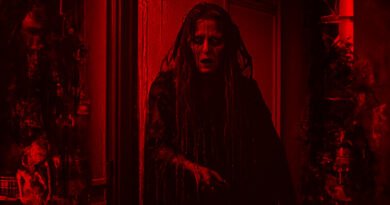Mysteries of the Hellraiser Movie Set

When Clive Barker unleashed Hellraiser in 1987, it quickly earned a place in horror history. With its unflinching vision of pain, pleasure, and otherworldly torment, the film struck a chord with audiences and established the terrifying Cenobites as horror icons. However, away from the blood-soaked sets and nightmarish visuals, Hellraiser was allegedly haunted by more than just its subject matter. Cast and crew members have since shared stories of strange occurrences, missing props, and an unsettling presence that seemed to linger behind the scenes.
These tales have fuelled speculation about whether Hellraiser was more than just a horror film—perhaps it was a production touched by something darker. Here, we explore some of the lesser-known mysteries surrounding the making of the film, with a particular focus on the enigma of the Lament Configuration, the infamous puzzle box that unlocks the gateway to Hell.
The Vanishing Puzzle Box
One of the most persistent legends from the set involves an early version of the Lament Configuration—the puzzle box that, when solved, summons the Cenobites. Designed by artist Simon Sayce, the box’s intricate patterns were intended to reflect the dark elegance of its purpose. Several versions were constructed for the film, but during production, one of them allegedly disappeared without explanation.
Initially believed to have been misplaced, the missing box became a running joke among the crew, who teased that it had been “claimed by the Cenobites.” But as time went on and it remained unaccounted for, the atmosphere grew more uneasy. Director Clive Barker reportedly dismissed the incident as a simple oversight, but others weren’t so sure. Some members of the art department later said that this specific version had a subtly different design etched onto it—a configuration no one remembered authorising.
A Set With a Presence
Numerous actors and technicians have recounted a strange sensation on set, particularly during scenes involving the puzzle box or the infamous attic room where Frank is resurrected. Doug Bradley, who portrayed the lead Cenobite, later known as Pinhead, once mentioned in an interview that there were moments where the air seemed “heavier,” almost as if something was watching. Others described sudden drops in temperature and unexplained equipment failures during key scenes.
Sound technicians complained of inexplicable feedback and audio glitches whenever dialogue involving the Cenobites was being recorded. Cinematographer Robin Vidgeon reportedly had to reshoot several scenes due to lighting inconsistencies that couldn’t be explained by technical error.
Of course, it’s easy to chalk such experiences up to production stress and the power of suggestion. But the consistency and specificity of the reports hint at something more profound—perhaps even supernatural.
The Unauthorised Puzzle Box
Perhaps the most baffling event occurred post-production, when props were being catalogued and packed for storage. The prop department discovered an extra Lament Configuration box, but this one was unlike the others. It was slightly larger, with different etchings on its surface, and none of the artists or prop masters remembered making it. Worse still, it was constructed from materials not used in the original builds.
Rather than being crafted from wood with brass detailing like the others, this rogue box seemed to be made from a composite material that no one could identify. Its finish was unusually cold to the touch, and those who handled it said they felt mildly nauseous afterwards.
The box was eventually stored away and forgotten until years later, when it was reportedly donated to a horror memorabilia exhibition. According to legend, it now resides in a private collection, though no collector has publicly confirmed ownership.
Clive Barker’s Silence
Interestingly, Clive Barker has rarely commented on these stories, though he’s acknowledged the film had a unique atmosphere. In a 2003 interview, he cryptically stated, “There were moments during the shoot where it felt like the film was watching us. Not the other way around.”
While this could be interpreted as a metaphor for the immersive nature of the film’s production, fans of the paranormal have taken it as a hint that Barker himself experienced something uncanny. Some have suggested that Barker’s creation, rooted in themes of desire and damnation, may have inadvertently tapped into something real—a theory he has never confirmed nor denied.
The Curse Theory
As with many horror classics, Hellraiser has not escaped rumours of a curse. Though the film didn’t experience the same level of tragedy as, say, Poltergeist, there were a number of misfortunes during and after production. Key crew members suffered unexpected illnesses, a minor fire broke out on set, and post-production was plagued with editing delays and distribution issues.
While none of these incidents were severe enough to halt the film, together they form a pattern that some believe reflects a malevolent energy surrounding the project. Given the dark subject matter, themes of ritual, and the visual invocation of arcane symbols, it’s perhaps unsurprising that Hellraiser has drawn such speculation.
Legacy of the Lament Configuration
To this day, the Lament Configuration remains one of horror cinema’s most iconic objects. Its elegant, cursed design has appeared in nearly every sequel and spin-off, evolving from a simple prop to a legendary symbol. But fans and collectors continue to debate the truth behind the mysterious extra box, and whether any part of it had a life beyond the screen.
Was it a simple case of miscommunication in the prop department? A clever marketing ploy? Or did Clive Barker and his team unwittingly open a door to something they didn’t fully understand? We may never know.
One thing is certain: Hellraiser is not just a film that disturbs the senses. It is a work that lingers, both in the mind and, perhaps, in the shadows of the world behind the camera. As Barker himself might say, some doors should never be opened. But when they are, what steps through might not leave so easily.
And if you ever come across a puzzle box that feels a bit too cold to the touch—best to leave it alone.




